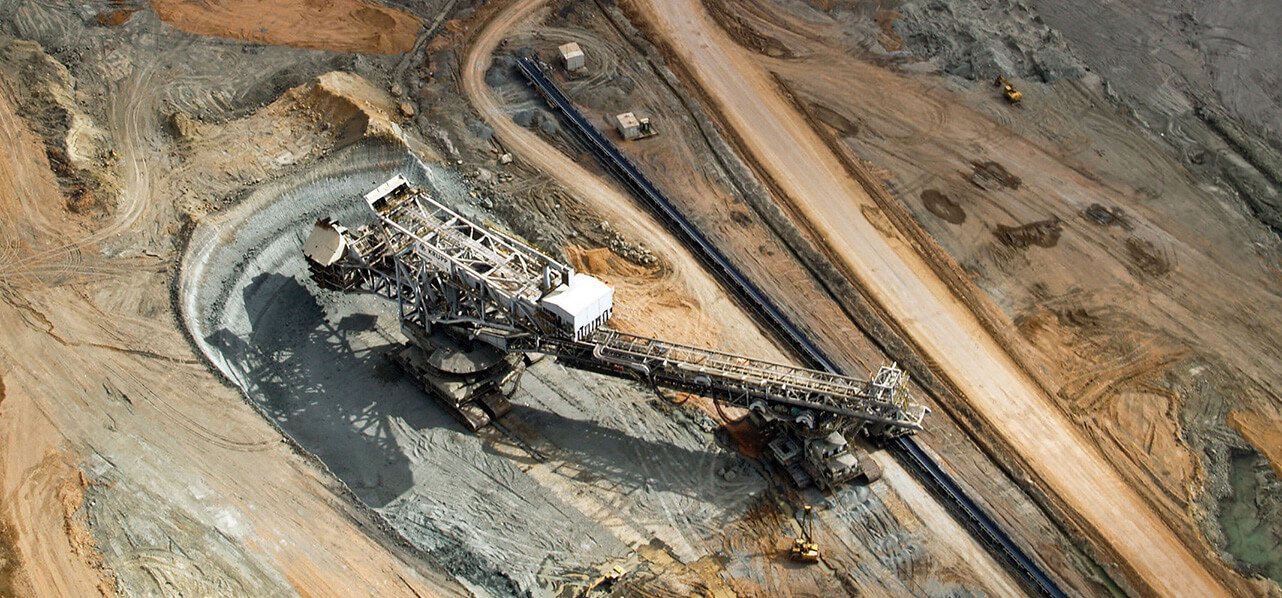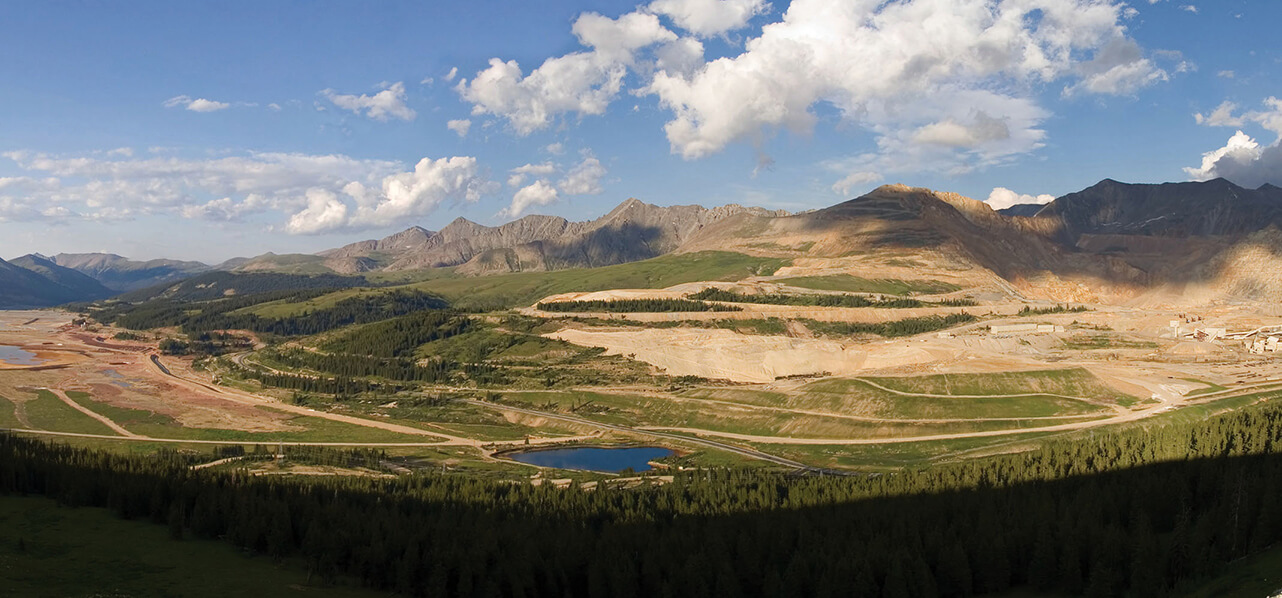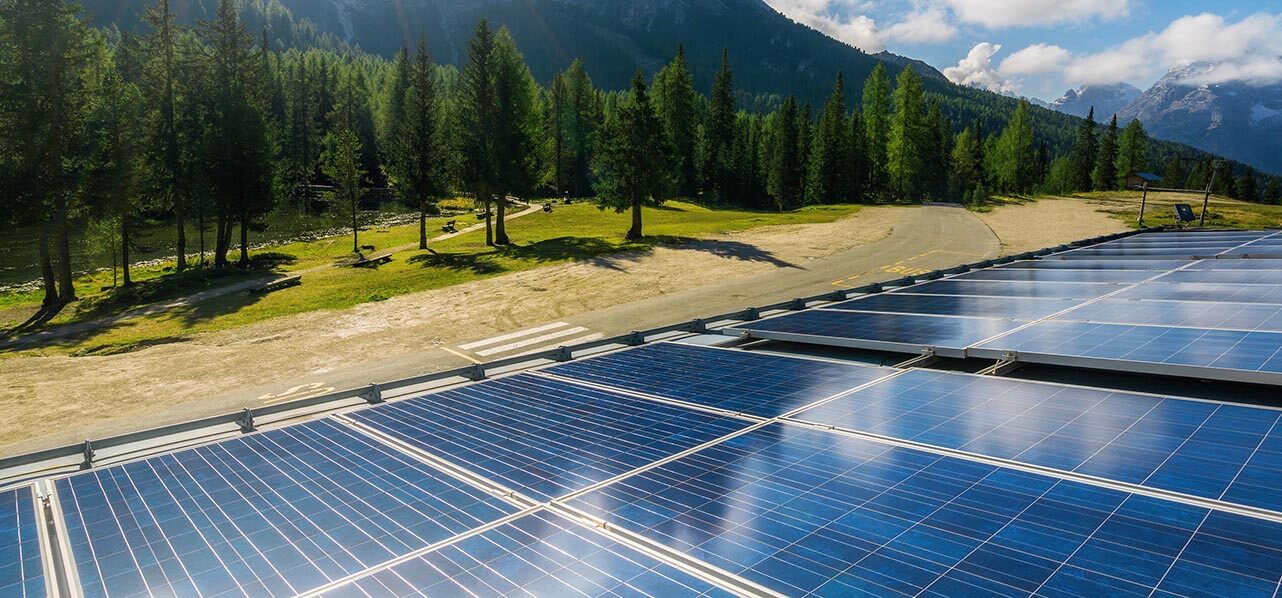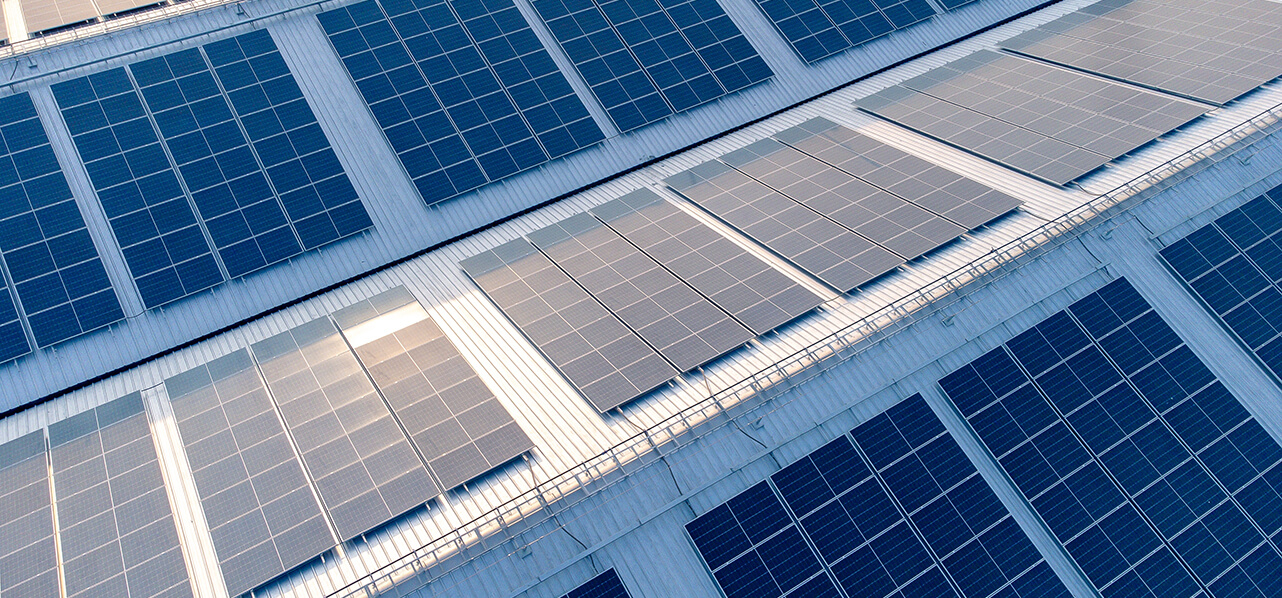Partner London
"The mining sector has always struggled with its image as a “dirty” industry. It will take a monumental shift in public perception for this image to be changed."
MINING AND RENEWABLES: AN ODD COUPLE
The mining sector has always struggled with its image as a “dirty” industry. Mines can be hazardous for those who work in them and damaging to the surrounding environment, including through greenhouse gas emissions. It will take a monumental shift in public perception for this image to be changed.
And yet, as we discussed in our previous article¹, mining is key to the growth of renewable energy, as green technology is heavily reliant on certain metals and minerals. Solar power, expected by the International Renewable Energy Agency to reach 8,519 GW of capacity worldwide by 2050², relies on the supply of aluminium, copper and certain rare earth elements (including indium and cadmium) to produce PV panels. Similarly (and at the risk of stating the obvious), wind turbines are made from steel and their manufacture is therefore dependent on the production of iron, but also certain rare-earth elements such as neodymium are needed for the magnets used inside turbine generators. More generally, copper is essential to all power generation infrastructure, as well as electric vehicle (EV) technology.
Critics have rightly pointed out the conflict in outcomes here, aptly described in a recent Financial Times article by Francis Fannon, the Assistant Secretary of State of the US Bureau of Energy Resources, as “the green revolution’s inconvenient truth about mining”³. The driving purpose of the shift to renewable energy is the reduction of greenhouse gas emissions caused by polluting coal and other fossil fuel generators; this cannot be at the expense of the very environment we are trying to preserve and requires mining operations to become more sustainable in parallel.
So, what is the problem and what is the solution?
THE PROBLEM – CLIMATE CHANGE, SUSTAINABILITY AND MINING
The mining industry is responsible for 4-7% of global greenhouse gas emissions – 1% of these are from Scope 1 and 2 emissions, caused directly by mining operations or indirectly through, for example, electricity consumption used to power mines; the remaining 3-6% coming from fugitive methane emissions. Scope 3 emissions caused by all other indirect usage of the minerals extracted (for example coal used in coal-fuelled power stations) are in turn responsible for up to 28% of global greenhouse gas emissions⁴.
"Wind turbines are made from steel and their manufacture is therefore dependent on the production of iron, but also certain rare-earth elements such as neodymium are needed for the magnets used inside turbine generators."
The ESG (Environmental, Social and Governance) Sector Risk Atlas produced by S&P Global clearly illustrates the negative perception faced by the metals and mining sector⁵. Each sector’s exposure to environmental and social risks is given a rating of 1 to 6, 1 being low risk and 6 being high risk. Mining and metals achieved a full 6 out of 6 on the environmental risk scale and 5 out of 6 on the social scale, placing it on par with oil and gas as the most dangerous industry of those measured in the report.
The annual Responsible Mining Index Report, published in May of this year, paints a similar picture. This found that the mining industry has only made piecemeal progress towards the achievement of the Sustainable Development Goals (SDGs) adopted in 2015 by the United Nations General Assembly⁶.
Climate change also poses a wider threat to the mining sector. Metals that are likely to see a growth in demand, due to their importance in the production of renewable energy technology, tend to be concentrated in areas vulnerable to the effects of climate change.
A recent McKinsey report found that 30-50% of the global production of copper, gold, iron ore and zinc is concentrated in areas where there is already a strain on the water supply⁷. Examples include the arid northern Atacama Desert in Chile as well as Western Australia and certain parts of northern China. A reliable supply of water is critical for the mining workforce, for the operation of the required machinery and as a coolant for shafts that are prone to reach high temperatures, so pressure on water supply can have severe results for mines located in dry areas.
The melting of the polar ice caps and rising sea levels pose a similar threat. In July this year, Store Norske Spitsbergen Kulkompani was forced to shut its coal mine in Svalbard, Norway due to flooding from rising water levels. Svalbard had experienced record high temperatures in the days preceding the shutdown, resulting in the nearby glaciers producing four times as much water as would normally be expected⁸.
Key contacts
"At the same time as demand for renewable energy continues to grow, enthusiasm for investment in fossil fuels and mining is shrinking."
Mining companies have not ignored the need to become more environmentally responsible. Advancements in technology have increased automation, meaning that workers are less often required to enter hazardous mining shafts and risk exposure to noxious substances. Improvements in exploration and drilling equipment used to locate and extract minerals have created an unprecedented level of precision, reducing the amount of unnecessary excavation. Elsewhere on site, the drive to reduce carbon emissions has impacted the modernisation of mine vehicle fleets through hydrogen power. In Chile, Alta Ley is working with Austrian technology firm Alset to produce a “dual fuel” system using hydrogen and diesel to power existing combustion engines. The truck prototype is set to commence operations by 2021 with a fuel mix of 70% hydrogen, which Alset predicts could cut carbon emissions by 2,260 tons per year⁹. However, there is more that can be done.
WHY IS THIS A PROBLEM?
There are clear signs that many investors are adopting the “Toronto Principle”, so-called after the University of Toronto announced in 2015, following signature of the Paris Agreement on climate change, that it would be selling all its fossil fuel investments. The Financial Times reported in September 2019 that the number of institutional investors pledged to completely remove fossil fuels from their portfolios by 2030 had jumped from 180 in 2014 to over 1,100, representing around US$11tn in assets¹⁰. Other signs that the mining industry will face an increasingly hostile investing environment include the European Central Bank’s consultation, published on 20 May 2020, to guide banks to price their loan products in correlation to the environmental risks of the borrower/enterprise in question¹¹.
So, at the same time as demand for renewable energy continues to grow, enthusiasm for investment in fossil fuels and mining is shrinking, and the mining sector (not only that part mining fossil fuels) risks facing a market that is smaller, pricier and subject to a much greater degree of investor oversight. Accordingly, we expect that lenders and investors will require a far more rigorous covenant package in their loan agreements over the coming years when lending into mining activities to manage their exposure to environmental risks and incentivise change towards a more sustainable industry. To make this work will require a detailed – and achievable – ESG performance improvement plan above and beyond mere agreement to principles.
"Metals that are likely to see a growth in demand, due to their importance in the production of renewable energy technology, tend to be concentrated in areas vulnerable to the effects of climate change."
It is worth mentioning the increasing focus on whether the law should require companies and their directors more actively to combat climate change. To date, directors have been required to ensure compliance with all applicable environmental laws and regulation, rather than being under any obligation to actively take steps to reduce the environmentally damaging aspects of their business. There is no suggestion that the law will change imminently in this regard, but a recent article¹² penned by Lord Sales of the UK Supreme Court suggested a new legislative requirement for companies to appoint a board member specifically to address environmental impact issues. The point here is that discussion is already underway as to whether we can trust directors to “do the right thing” when it comes to making decisions that impact on the environment, or whether a more prescriptive legal framework is required. Directors who take proactive steps now may put themselves and their businesses in better stead in the future.
THE SOLUTION – HOW CAN RENEWABLES HELP?
Given this background, it is not surprising that mining corporations are looking to the opportunities that renewable energy presents as one of a range of solutions to becoming a more sustainable industry.
By necessity, mining is an energy-intensive process, especially for elements that are more difficult to extract (and therefore require additional machinery), or that require electricity for refinement (such as aluminium smelting). Mining operations have therefore always needed a consistent and reliable source of power to meet their day-to-day requirements.
The remote location of many mining operations, coupled with the need for a consistent baseload, has historically required heavy fuel oil (HFO) generators that, whilst being highly polluting, are reliable and can therefore meet the demands of the mine. This has been at odds with the intermittency of most renewable energy sources (outside of hydro and geothermal), because if the sun is not shining, or the wind fails to blow, no power will be generated, and no power means no mining or falling back on HFO power sources.
More than that, however, offtakers and other supply chain participants are making their views known: mines that produce raw materials have to focus on maximum ESG potential, and that requires a mine to use renewable energy sources wherever possible.

The mining sector is beginning to take the issue of climate change and sustainability seriously.
So, with advancements in renewable energy technology and the commitment of some key industry players, the industry is ready for change and there are many benefits for mining companies that switch to renewables:
- Reduced reliance on fossil fuels that are vulnerable to global price fluctuations;
- A reduction in carbon emissions, particularly Scope 2 emissions for mines that consume a lot of electricity;
- Satisfaction of environmental and social criteria used to measure the sustainability and green credentials of a given project – this will be a pre-requisite for offtakers as well as investors and lenders;
- Improved investor engagement. As already noted, the growing shift of debt and capital markets towards sustainable and green investments means that compliance with ESG and SDG indicators will be crucial to maintaining and improving the equity investor base and/or terms on which debt will be made available; and
- Stability in power price. The introduction of contracts for difference and other price hedging instruments have allowed companies to stabilise their long-term power costs based on an agreed “strike price”. Furthermore, the cost of battery production is predicted to halve in the next decade, making large-scale energy storage capable of powering a mine’s operations even without consistent supply.
"This undoubtedly provides confidence to all industries, including the mining sector, that solar and wind energy is a viable alternative to fossil fuels."
The Chilean mining industry was an early adopter of renewables. With much of its mineral deposits being based in the remote Atacama region (which also happens to have the highest solar incidence in the world), renewable energy solutions have been deployed as a necessity to provide low-cost power to sites that would otherwise need significant capital expenditure to link up to the national grid or be forced to rely on HFO fuelled generators. As early as 2013, Codelco (the state-owned copper mining company) developed the 34 MW Pampa Elvira solar power project that annually contributes 54,000 MWh of thermal energy to the Gabrial Mistral copper mine, which replaces 85% of the fossil fuel used in the electrowinning process, resulting in an annual reduction in CO2 emissions of 15,000 tonnes¹³.
The Australian mining industry is also latching onto this trend. Australia already meets 23.5% of its total energy demand through renewable energy sources and “cruised” over its 2020 renewable energy target¹⁴. This undoubtedly provides confidence to all industries, including the mining sector, that solar and wind energy is a viable alternative to fossil fuels. Early examples of the transition to renewable energy include Sandfire’s DeGrussa copper and gold mine development of a 7 MW solar power project, with a 6 MW lithium-ion battery¹⁵, and the Sun Metals 116 MW solar farm in Queensland (self-financed for AU$182m)¹⁶. In March of this year, Rio Tinto announced plans to invest US$98m in a new 34 MW solar PV project with 12MWh of battery storage at its iron ore mine in the Pilbara region of Western Australia, which is expected to meet 65% of the mine’s average electricity demands and 100% of its needs during peak solar power generation times¹⁷.
Advances in Africa have been more piecemeal but are also beginning to build pace. The Mauritanian government was an early investor in the hybridisation of the power supply to its coal mines in Zouerate; by 2011 a 4.4 MW wind project had been commissioned to supply electricity to the mine alongside the existing 16 MW diesel powered generator already in use¹⁸. South African miners also have projects in the pipeline, including a 200 MW solar plant planned by Sibanye-Stillwater and a 40 MW solar park by Gold Fields at its South Deep gold mine in Gauteng¹⁹.
Overall, a recent report by Fitch Solutions Macro Research, revealed that around 1 GW of renewables was already built at mining sites across the world, and that another 1 GW is in the pipeline²⁰.
What is evident from these examples is that, whilst progress could always be quicker, the mining sector is beginning to take the issue of climate change and sustainability seriously. Although arguably the reduction of emissions should be a goal in and of itself, how else can renewables benefit miners beyond helping them to ameliorate their carbon footprint?
"A key advantage of renewable energy is that it can power the energy needs of mining operations in remote areas, where the cost of building the infrastructure required to hook the mine up to the grid network or building a conventional power station would be significant."
OFF-GRID OPPORTUNITIES
A key advantage of renewable energy is that it can power the energy needs of mining operations in remote areas, where the cost of building the infrastructure required to hook the mine up to the grid network or building a conventional power station would be significant. By having a dedicated off-grid renewable power source, a mining operation can meet all its energy requirements from green sources and make significant cost savings in the price it pays for its electricity.
Take for example the Canadian gold-mining company B2Gold’s plan to develop and install one of the world’s largest off-grid solar and battery power systems at its Fekola mine in Mali. The US$38m project will consist of a 30 MW solar plant with 13.5 MWh battery storage, to be integrated into the existing power plant which runs off HFO²¹.
Another solution is the development of micro-grids in areas with a high concentration of minerals where several mining operations are in place. Micro-grids benefit from being disconnected from the main grid, thereby allowing the operator greater control over the power output, which is essential in any mining operation where the supply of power is key. The recently developed Agnew microgrid in Australia developed by EDL (a renewable energy company) and local mining company Gold Fields, is an excellent example of this. With an array of five 110m-high wind turbines, each with 140m-wide rotor spans, plus over 10,000 solar panels, the grid has a capacity of 22 MW and is already supplying the majority of the power to the Agnew gold mine, achieving as much as 78% of the total power consumption of the operation (the remaining power being generated by its on-site 24.2 MW natural gas generator)²². Key to the success of the Agnew micro-grid is the technology developed by EDL to harmonise the output of each generation source in a manner that optimises the output from the renewable energy sources and only uses the natural gas generator where necessary. Such technology would be far more difficult to implement in a mine attached to the national grid where the operator would not have autonomous control over the system balances. Gold Fields also has plans to install an additional twelve wind turbines at its nearby Granny Smith mine, which already benefits from 8 MW of solar panels with a 1 MW/2 MWh lithium-ion battery, that it intends to connect to the Agnew micro-grid²³.
VIRTUAL POWER PURCHASE AGREEMENTS (PPAs) – A PRACTICAL SOLUTION
Even if it is not viable for a mine to establish its own renewable energy source in close proximity to its operations, the rise in so-called synthetic or virtual PPAs still provides an incentive for mining companies to invest in renewables.
"A synthetic or virtual PPA can provide a good solution if it is not possible for the mine and the renewable generator to be connected to the same grid."
If a mining operation has its electricity supplied from a national or regional grid, it can enter into a PPA with a renewable energy provider to buy its electricity directly from the generator for an agreed price. One method of achieving this is through a direct retail or “sleeved” PPA, whereby a mine (or indeed any offtaker) can enter into an agreement directly with a renewable energy producer, fixing the price but paying a fee to the utility, via which the electricity will pass through to cover its cost of managing the grid to resolve any balancing issues (i.e. if the renewable energy source fails to produce enough electricity on a given day, the mine can purchase additional power from the utility). A potential drawback to this is that it requires the wind farm or solar plant to be hooked up to the same grid as the mine, which is not always practical.
Alternatively, a synthetic or virtual PPA can provide a good solution if it is not possible for the mine and the renewable generator to be connected to the same grid. A virtual PPA can take many different forms but, most commonly, it is effectively a financial instrument between a renewable generator and an offtaker, which has the effect of providing the latter with a stable energy price over the term of the PPA. In practice, the mine, as offtaker, is still being supplied with energy from a mix of sources under a sleeved or virtual PPA but can reap the benefits of the low cost of renewable power, without being electrified directly from a renewable source. This requires a functioning and well-operated grid, so might not always be economically viable, but is already being used in a number of countries.
For instance, Anglo-American has recently entered into a 15-year virtual PPA with Actis-owned Atlas Renewable Energy. The 613 GWh per year agreement, valued at US$190m, will supply the miner with an estimated 90% of its Brazilian electricity demand by 2022²⁴. Similarly, BHP has recently agreed a five-year PPA with CleanCo (the Queensland government-owned renewable energy developer) under which it intends to purchase up to half of the power required for its Queensland coal mining operations from CleanCo’s wind and solar generators over the term of the PPA²⁵.
Government regulation is another reason why virtual PPAs could be preferable. For obvious reasons, the generation and supply of electricity to consumers is highly regulated in most jurisdictions. The problem faced by miners and renewable energy developers alike is that it is often the case that, in order to develop a power project of sufficient size to power a particular mine, it will normally need to be licensed by the national regulator. Even if a license is not strictly required, there is often local or national political pressure to connect to the grid and overcome the potential perception that the mine is just looking after itself. This can be costly and off-putting to mining companies who would rather avoid the red-tape of the electricity market. A virtual PPA can circumnavigate this – a particular mine can continue to receive its supply of electricity from its usual supplier, but separately enter into a PPA with a renewable energy company (which has all the relevant licences and regulatory consents) via which it can “purchase” its electricity from renewable sources.
"Instead of being put off the mining industry as an investment opportunity, investors and lenders should, and are needed to, work with mining companies to implement ESG improvements and a successful transition to becoming green."
CONCLUSION – MINING AND RENEWABLES: THE RIGHT COUPLE
The mining industry is clearly taking active steps to improve its environmental record, but this will continue to be a very long transformation process.
Mining companies will need to continue to improve their ESG credentials across their operations and supply chains to implement meaningful change. Any mining company’s environmental strategy must address improving the efficiency of the energy used on site, such as expanding capacity to recycle scrap metals, increasing investment into methane and carbon capture storage technologies, and switching to cleaner energy sources, including hydrogen in the trucks and HGVs that are used on site and renewable power for electricity supply wherever possible.
It is therefore very clear that the mining and renewable energy industries will have, and need to have, a strong future, symbiotic relationship. The renewable energy industry needs metals and minerals to be mined to enable the path towards net zero carbon. Likewise, the mining industry will rely more and more on renewable energy to drive its development from a dirty image to a clean one, and thereby maintain and enhance investor appetite.
One of the keys to this relationship is the rapid development of suitable renewable power supplies to both existing and new mining operations. Whether this is achieved through co-located power, off-grid opportunities, virtual PPAs or other solutions that may still be on the drawing board, is, in some ways, irrelevant. The impetus will only lead further in that direction, and the sooner mining operators adapt their model to accommodate this, the sooner they will be able to persuade investors and lenders and, equally importantly, offtakers to support them.
Investors and lenders will also need to be part of the solution. Instead of being put off the mining industry as an investment opportunity, investors and lenders should, and are needed to, work with mining companies to implement ESG improvements and a successful transition to becoming green. A stringent covenant package, or a marked increase in lender control, will not suffice – it requires forward thinking and open mindedness to invest in an industry that, whilst historically perceived as dirty, is essential for the global roll out of renewable energy and to show the way to a greener world.
If you have any questions about this article or mining and/or renewable energy more generally, please contact our team or your usual WFW contact.
Trainee Oliver Baines also contributed to this article.
[1] https://www.wfw.com/articles/the-mining-industry-an-essential-part-of-a-renewable-future/
[3] https://www.ft.com/content/12d5164e-6788-11ea-800d-da70cff6e4d3
[6] https://www.responsibleminingfoundation.org/app/uploads/RMF_CCSI_Mining_and_SDGs_EN_Sept2020.pdf
[8] https://blogs.ei.columbia.edu/2020/09/18/coal-mining-svalbard-glacier-flood/
[10] https://www.ft.com/content/4dec2ce0-d0fc-11e9-99a4-b5ded7a7fe3f
[12] https://www.supremecourt.uk/docs/speech-190827.pdf
[13] https://www.innergex.com/sites/pampa-elvira/
[17] https://www.intelligentliving.co/rio-tinto-34-mw-solar-farm-australia/
[18] http://www.vergnet.com/project/mauritania-nouadhibou/
[19] https://www.pv-magazine.com/2020/01/30/south-african-mining-sector-wants-solar/
[20] https://www.pv-magazine.com/2020/01/30/south-african-mining-sector-wants-solar/
[23] https://reneweconomy.com.au/gold-fields-eyes-wind-energy-bolt-on-at-granny-smith-mine-66645/
[25] https://reneweconomy.com.au/bhp-turns-to-wind-and-solar-to-help-power-queensland-coal-mines-78872/






